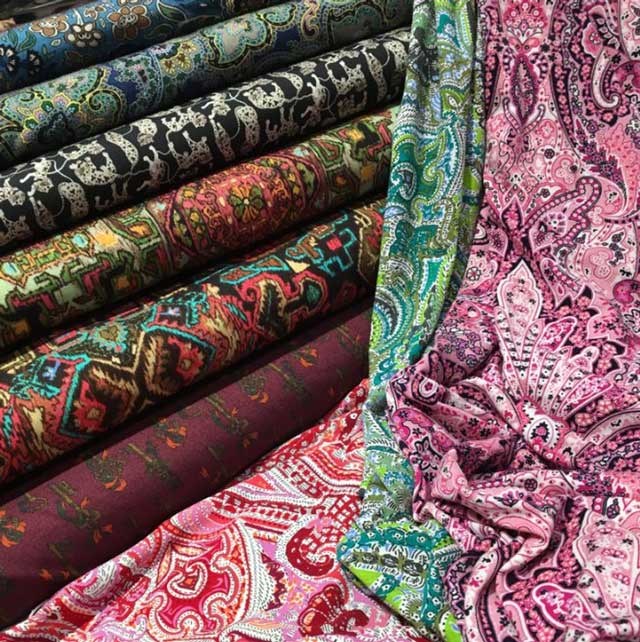Rayon fabric has carved a significant niche in the textile industry, known for its versatility and unique properties. As a semi-synthetic fiber made from natural sources, rayon is often lauded for its silk-like feel, breathability, and ability to drape beautifully. This article delves into what rayon fabric is, its history, types, benefits, and uses, helping you understand why it remains a popular choice in fashion and home textiles.
What is Rayon Fabric?
rayon fabric made from regenerated cellulose, primarily derived from wood pulp, cotton linters, or other plant materials. Unlike fully synthetic fibers such as polyester or nylon, rayon retains many of the natural properties of its cellulose source. This gives rayon fabric a soft, smooth texture that is comfortable against the skin, making it an ideal choice for clothing and textiles.
A Brief History of Rayon
The invention of rayon dates back to the late 19th century. In 1855, French chemist Frederick Gustav Göths developed a method to dissolve cellulose to create a fiber, but it wasn’t until 1884 that the first commercially successful process was developed by the Frenchman Hilaire de Chardonnet. He named this new fabric “artificial silk,” as it closely resembled the luxurious feel of silk.
By the early 20th century, rayon gained popularity as an affordable alternative to silk. It became widely used during World War I when silk was scarce. Over the years, advancements in manufacturing techniques have led to the creation of various types of rayon, each with distinct properties and applications.
Types of Rayon Fabric
There are several types of rayon fabric, each with unique characteristics:
1. Viscose Rayon
Viscose rayon is the most common type of rayon. It is made through a process that involves dissolving cellulose in a chemical solution, which is then spun into fibers. Viscose is known for its softness, breathability, and vibrant color retention, making it popular for clothing, especially dresses and blouses.
2. Modal
Modal is a type of rayon made from beech tree pulp. It is known for its exceptional softness, durability, and moisture-wicking properties. Modal is often used in activewear and undergarments due to its breathability and comfort.
3. Lyocell
Lyocell is a more environmentally friendly version of rayon, produced through a closed-loop process that recycles water and solvents. It is known for its strength, resistance to wrinkles, and biodegradability. Lyocell is often marketed under the brand name Tencel and is used in various applications, including clothing, bed linens, and home textiles.
4. Bamboo Rayon
Bamboo rayon is made from bamboo pulp and is celebrated for its sustainability. It has antibacterial properties and is highly breathable, making it ideal for activewear and loungewear. However, the production process can involve harsh chemicals, which has raised concerns about environmental impact.
Benefits of Rayon Fabric
Rayon fabric offers a range of benefits that make it a popular choice for consumers:
1. Comfort and Breathability
Rayon is soft and breathable, providing a comfortable wearing experience, especially in warm weather. Its moisture-absorbing properties help keep the skin dry, making it a great option for summer clothing.
2. Versatile and Stylish
Rayon can mimic the appearance of silk, wool, cotton, and linen, making it a versatile fabric that can be used in various styles and designs. It drapes beautifully, which adds elegance to garments and home textiles.
3. Vibrant Colors
Rayon has excellent dye-ability, allowing it to retain vibrant colors and patterns. This makes it an appealing choice for fashion designers looking to create eye-catching garments.
4. Affordable Luxury
While rayon mimics the feel of more expensive fabrics like silk, it is generally more affordable. This affordability allows consumers to enjoy stylish, luxurious-looking clothing without breaking the bank.
5. Eco-Friendly Options
With the rise of sustainable fashion, rayon production methods have evolved. Types like Lyocell, produced in an environmentally friendly manner, appeal to eco-conscious consumers.
Uses of Rayon Fabric
Rayon fabric is used in a wide array of applications, including:
1. Apparel
Rayon is a popular choice for clothing such as dresses, blouses, skirts, and linings. Its drape and softness make it suitable for various styles, from casual wear to formal attire.
2. Home Textiles
Rayon is commonly used in home textiles, including curtains, bed linens, and upholstery. Its ability to hold color well makes it ideal for decorative fabrics.
3. Activewear
Modal and bamboo rayon are increasingly found in activewear due to their moisture-wicking properties and comfort. They allow for freedom of movement while keeping the wearer dry.
4. Undergarments and Sleepwear
The softness and breathability of rayon make it a favorite for undergarments and sleepwear. Fabrics like modal are particularly popular for these applications.
Care and Maintenance of Rayon Fabric
Caring for rayon fabric requires a bit of attention to maintain its quality:
1. Washing
Rayon can shrink when washed, so it’s best to wash it in cold water. Hand washing is recommended, but if you use a machine, choose a gentle cycle.
2. Drying
Avoid wringing out rayon items, as this can distort the fabric. Instead, lay them flat to dry or hang them up, away from direct sunlight to prevent fading.
3. Ironing
Rayon can wrinkle easily, so ironing may be necessary. Use a low-temperature setting and place a cloth between the iron and the fabric to prevent scorching.
Conclusion
Rayon fabric is a remarkable textile that combines beauty, comfort, and versatility. Its various types cater to different needs, making it a popular choice in the fashion industry and home textiles. As sustainability continues to be a driving factor in consumer choices, innovations in rayon production, such as Lyocell and bamboo rayon, offer eco-friendly options for conscious shoppers. Whether you’re dressing up for a special occasion or relaxing at home, rayon fabric provides an elegant and comfortable choice that will enhance your wardrobe and living space.
